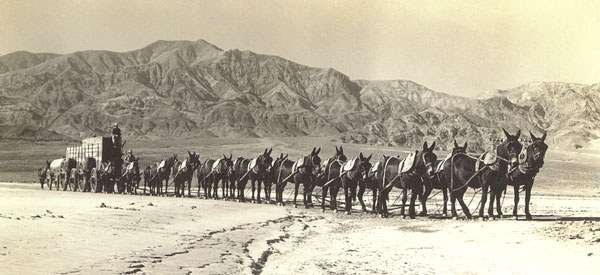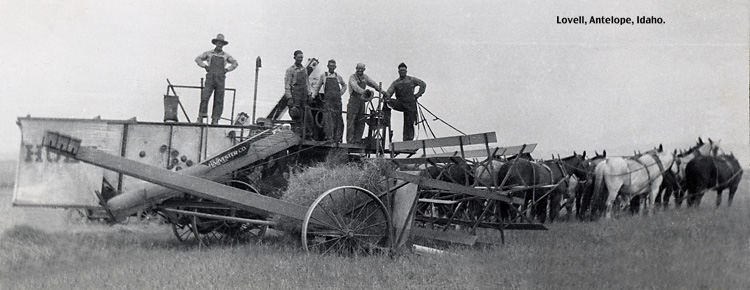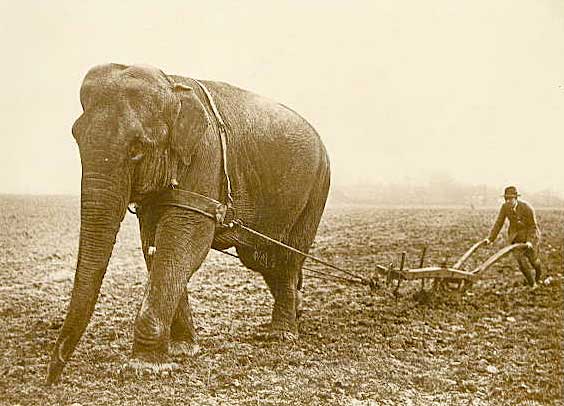 |
||
|
The term horsepower is so common today when referring to modern engines that it is easy to forget that it's origins were....well,
horses powering things, and how many horses it took to pull something.
 |
|||
|
In the picture above it was mule power, not horse power, that pulled the three heavily loaded wagons uphill and downhill over
roads that were only marginally improved. But the principle is the same. Our pioneer ancestors measured their ability to
move things in horsepower, which was, simply, how many horses did they need to move a given load over a specific type of terrain
and road for a given distance. It was an essential calculation that became second nature for those for whom horsepower was
a measure of what they could accomplish.
Kenneth Morgan, a grandson of Thomas Morgan who was raised on the William Morgan farms near American Falls, Idaho, described to this writer what it was like to drive a team of twenty or more horses pulling a header. One can see, from looking at this picture of a Lovell family horse drawn threshing machine, that a great deal of knowledge and skill were required to keep all the hitches, harnesses, traces, lines, and obstinate horses coordinated to get twenty or so horses to pull one machine.
And, when people became weary of hassling twenty or thirty horses into one cohesive pulling unit they very likely longed for just one big horse who could pull it all. Times were hard. They were willing to try anything! |
|||

